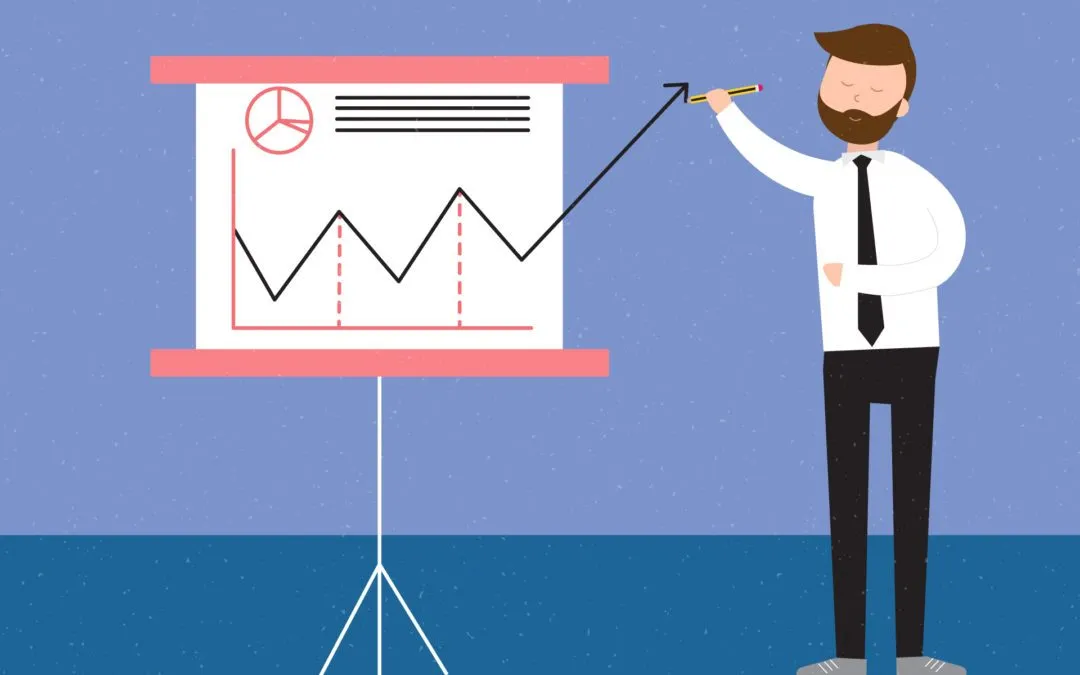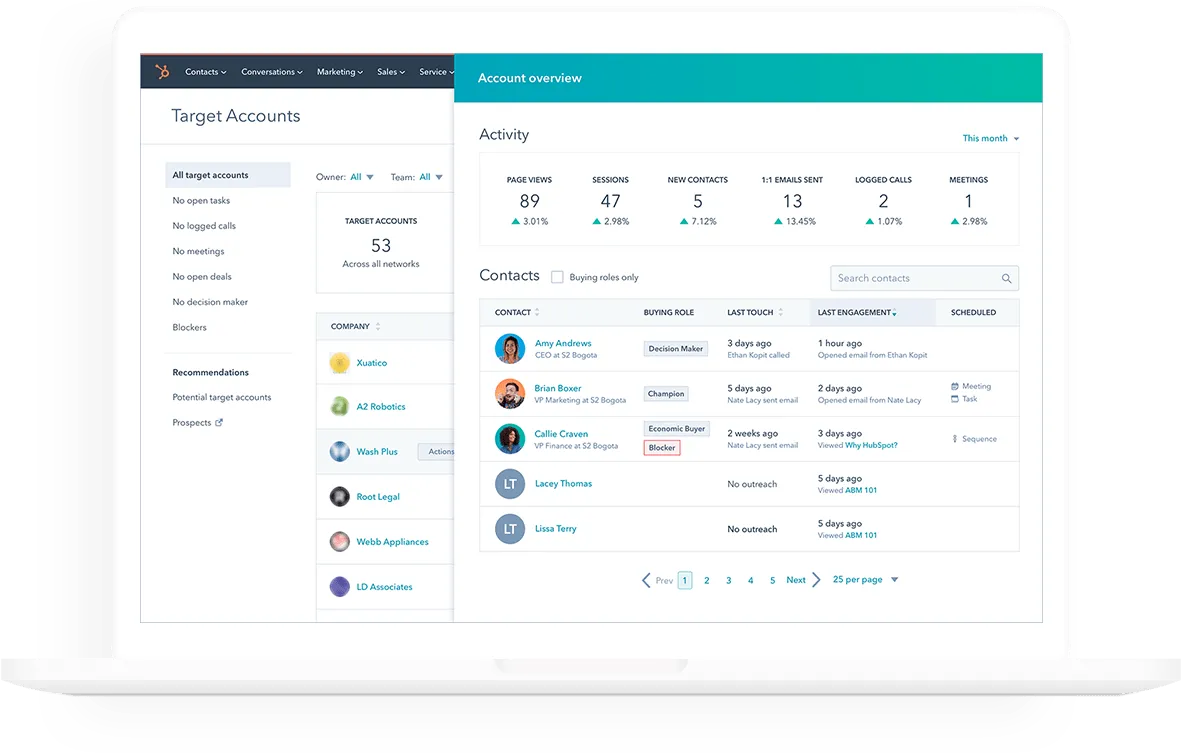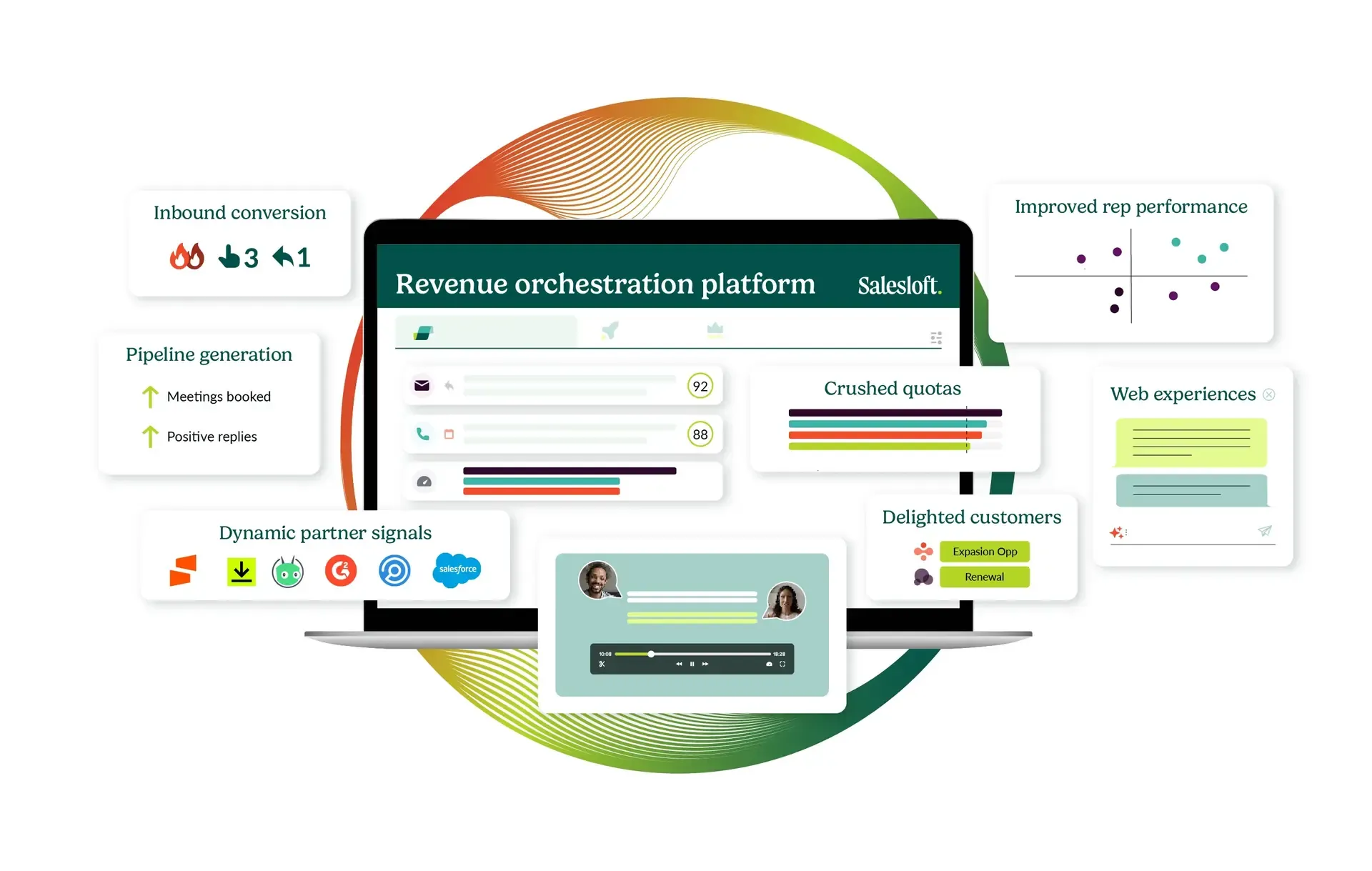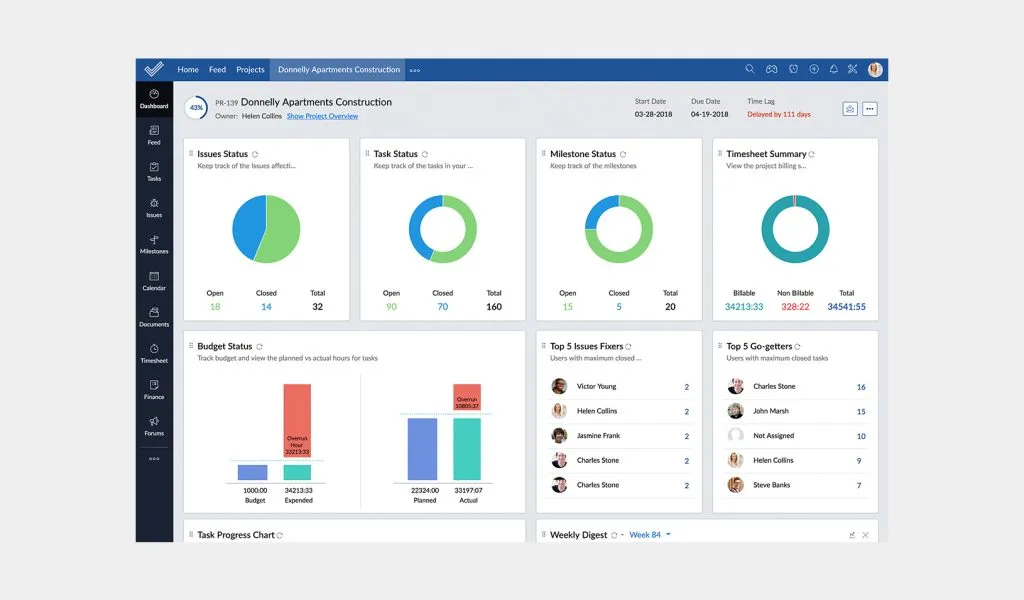Introduction to Sales Engagement

What is Sales Engagement
Sales engagement refers to the interactions between sales teams and prospects or customers, aiming to build relationships and drive sales. It involves strategies, tools, and processes to effectively communicate, nurture leads, and close deals.
Successful sales engagement relies on understanding customer needs, personalized communication, and leveraging sales engagement platforms to streamline the process.
What is Sales Enablement
Sales enablement is the strategic use of processes, tools, and training to improve the efficiency and effectiveness of sales teams. It equips sales representatives with the necessary resources, knowledge, and skills to engage effectively with prospects, leading to increased sales success and revenue growth.
Sales enablement focuses on aligning sales and marketing teams, optimizing sales engagement strategies, and providing sales engagement platforms and content management tools to support the sales process.
Sales Engagement vs Sales Enablement
Why is it Important to have a Sales Engagement Process

Having a well-defined sales engagement process is critical for any business looking to drive sales and foster lasting relationships with its customers.
This structured approach not only streamlines interactions between sales teams and prospects but also optimizes every step of the sales journey to improve outcomes and efficiency.
Improved Customer Experience
1. Personalization: By understanding customer needs and preferences, sales reps can tailor their communication, increasing engagement and satisfaction rates. Companies that excel at personalization generate 40% more revenue from these activities than average players.
2. Timely Follow-ups: A structured process ensures timely follow-ups, critical for keeping prospects engaged. Studies show that responding within an hour increases lead conversion rates by 7x compared to later responses.
Increased Sales Efficiency
3. Streamlined Processes: A clear sales engagement process eliminates guesswork, enabling sales reps to focus on selling rather than figuring out what to do next. This leads to a 15% increase in sales productivity, according to Salesforce data.
4. Data-Driven Insights: With a defined process, every interaction and outcome can be tracked and analyzed, providing valuable insights that can be used to refine strategies, improve training, and enhance sales tools.
Higher Conversion Rates
5. Effective Lead Nurturing: Guiding prospects through the sales funnel with targeted information and solutions to their pain points significantly increases conversion chances. Nurtured leads make 47% larger purchases than non-nurtured leads.
6. Consistent Messaging: A unified sales engagement process ensures that all team members convey consistent brand and product messages, increasing trust and credibility among prospects.
How Does a Sales Engagement Process Look Like
A sales engagement plan or process outlines the journey a sales team takes to convert prospects into customers.
It's a structured pathway that involves several key stages, each designed to enhance interaction and move the prospect closer to a sale. By following a systematic approach, businesses can increase efficiency, improve customer relations, and boost conversion rates.
Key Stages of a Sales Engagement Process

1. Lead Generation
The process begins with identifying potential customers. Successful lead generation relies on targeting the right audience and utilizing effective channels like social media, email marketing, and SEO.
For instance, content marketing costs 62% less than traditional marketing efforts but generates three times as many leads.
2. Initial Contact and Qualification
Making the first contact through personalized emails or calls is crucial. Personalized emails improve click-through rates by an average of 14% and conversion rates by 10%.
Qualifying leads ensures that sales efforts are focused on prospects with a genuine interest or need for the product.
3. Nurturing and Follow-ups
Engaging with leads by providing valuable information, answering questions, and addressing concerns nurtures relationships. Companies that excel in lead nurturing generate 50% more sales-ready leads at a 33% lower cost.
Regular follow-ups keep the conversation going and demonstrate commitment to potential customers.
4. Presentation and Proposal
Tailoring presentations and proposals to meet the specific needs and pain points of each prospect can significantly increase the chances of success. Customized presentations can result in a 20% increase in sales opportunities.
5. Closing the Deal
This final stage involves negotiating terms, addressing any last-minute objections, and finalizing the sale. A well-executed sales engagement process can lead to closing rates improving by as much as 30%.
6. Post-Sale Engagement by Sales Teams
Continuing to engage with customers after a sale can lead to repeat business and referrals. In fact, increasing customer retention rates by 5% increases profits by 25% to 95%.
How to Build Sales Engagement Process to Close More Deals

Building a robust sales engagement process to close more deals involves strategic planning, the implementation of effective tools, and continuous optimization based on performance data. Here’s a comprehensive approach:
1. Crafting Ideal Customer Profiles for Targeted Sales Engagement
Understanding your Ideal Customer Profiles (ICPs) is the cornerstone of any successful sales engagement process. This step involves analyzing data and trends to identify the characteristics of your most valuable customers.
By defining these profiles, sales teams can tailor their engagement strategies to meet the specific needs and preferences of their target audience.
Why It's Crucial:
- Increased Efficiency: Sales teams can focus their efforts on leads with the highest conversion potential, increasing overall sales efficiency.
- Enhanced Personalization: With a deep understanding of ICPs, sales reps can personalize their approach, which has been shown to improve conversion rates by up to 15%.
How to Execute:
- Data Analysis: Start by analyzing your existing customer base to identify common characteristics and patterns among your most successful accounts.
- Customer Feedback: Incorporate feedback from current customers to understand what attracted them to your product or service and what could keep similar prospects engaged.
- Market Research: Look at market trends and research to refine your ICPs, ensuring they align with the evolving market dynamics.
2. Mapping the Customer Journey for Effective Sales Navigation
Mapping the customer journey is about understanding the path your prospects take from becoming aware of your product or service to making a purchase decision.
This step is vital for identifying key touchpoints where sales engagement can be most effective.
Why It's Crucial:
- Streamlined Engagement: By knowing each stage of the journey, sales teams can deliver the right message at the right time, significantly increasing the chances of conversion.
- Improved Customer Experience: A well-understood customer journey allows for a smoother, more personalized buying experience, which can lead to higher customer satisfaction and loyalty rates.
How to Execute:
- Identify Key Stages: Break down the buyer's journey into stages such as awareness, consideration, decision, and loyalty.
- Determine Engagement Opportunities: For each stage, identify opportunities for engagement. For instance, during the awareness stage, educational content might be most effective, while free trials or demos might work better in the decision stage.
- Leverage Feedback and Analytics: Use customer feedback and analytics to continuously refine your understanding of the journey. For example, if data shows a high drop-off rate at a particular stage, additional engagement efforts can be targeted there to improve conversion rates.
3. Developing Tailored Sales Enablement Resources for Every Step
Creating sales enablement resources tailored to each stage of the customer journey is essential for equipping your sales team with the tools they need to engage prospects effectively and close more deals.
These resources range from educational content that addresses early-stage buyer questions to detailed case studies and demos for those closer to making a purchase decision.
Why It's Essential:
- Increased Sales Effectiveness: Sales reps equipped with stage-appropriate resources can address prospects' needs more accurately, improving the likelihood of advancing them through the sales funnel.
- Enhanced Buyer Engagement: Buyers are 67% more likely to select a vendor that provides content for every stage of their journey, illustrating the importance of tailored resources.
How to Execute:
- Inventory of Current Resources: Start by auditing your existing sales and marketing materials to identify gaps in your content that need filling for each stage of the buyer's journey.
- Content Creation and Curation: Develop new materials specifically designed for different stages, such as educational webinars for the awareness stage or ROI calculators for the decision stage.
- Feedback Loops for Continuous Improvement: Regularly collect feedback from sales teams and prospects on the effectiveness of the resources. Use this feedback to refine and update your materials continuously.
4. Fine-tuning Communication Channels for Optimal Engagement
Optimizing communication channels ensures that your sales team interacts with prospects through their preferred mediums, enhancing the effectiveness of your sales engagement process.
This approach is about selecting the right mix of channels—email, phone, social media, in-person meetings, and more—to match the preferences of your target audience.
Why It's Crucial:
- Higher Engagement Rates: Prospects are more likely to engage when contacted through their preferred channels. For instance, millennials might prefer email or social media, whereas older generations might respond better to phone calls.
- Streamlined Sales Process: Using the right channels can help streamline the sales process, making it easier for sales reps to follow up and for prospects to move through the sales funnel.
How to Execute:
- Prospect Research and Segmentation: Analyze your target market to understand the communication preferences of different segments. This might involve looking at demographic data or past interaction histories.
- Multi-channel Strategy Implementation: Develop a strategy that incorporates multiple communication channels, allowing prospects to choose how they want to engage with your company.
- Monitor and Optimize Based on Performance: Keep track of which channels are performing best in terms of engagement and conversion rates. Use this data to continuously optimize your channel strategy, focusing more resources on the most effective channels.
5. Defining Precise Objectives and Performance Metrics
Setting clear goals and Key Performance Indicators (KPIs) is vital for steering your sales engagement process in the right direction.
This approach not only helps in measuring success but also in identifying areas that require improvement. By establishing specific objectives and metrics, you can align your sales team's efforts with your business's overall growth strategies.
Why It's Essential:
- Focused Strategy: Goals provide direction, ensuring that sales efforts are aligned with broader business objectives, such as increasing market share or entering new markets.
- Measurable Performance: KPIs allow you to track progress towards these goals, enabling data-driven decisions. For instance, a common KPI is the conversion rate from lead to customer, which helps in evaluating the effectiveness of your engagement strategies.
How to Execute:
- Goal Setting with SMART Criteria: Ensure your goals are Specific, Measurable, Achievable, Relevant, and Time-bound. An example could be increasing the lead conversion rate by 15% within the next quarter.
- Selecting Relevant KPIs: Choose KPIs that directly reflect your sales engagement process's success, such as email open rates, call response rates, and overall sales cycle length.
- Regular Monitoring and Adjustment: Use dashboards and reporting tools to monitor these KPIs in real-time, adjusting your strategies as necessary to stay on track towards your goals.
6. Implementing Routine Sales Performance Evaluations
Establishing periodic sales reviews is an effective way to ensure continuous improvement and adaptation of your sales engagement process.
These reviews offer opportunities to celebrate successes, address challenges, and refine strategies based on performance data and feedback from the sales team.
Why It's Crucial:
- Continuous Improvement: Regular reviews foster a culture of continuous learning and improvement, crucial for adapting to changing market conditions and customer expectations.
- Team Alignment and Motivation: These sessions can also serve as a platform for aligning team members on goals and strategies, boosting morale and motivation through recognition of achievements.
How to Execute:
- Scheduled Review Sessions: Conduct these sessions monthly or quarterly, involving key stakeholders from the sales and marketing teams to ensure a comprehensive view of the engagement process.
- Performance Analysis Against KPIs: Evaluate individual and team performance against the predefined KPIs. Discuss both high-performing areas and those needing improvement.
- Actionable Feedback and Strategy Refinement: Provide actionable feedback and collaboratively develop strategies for addressing underperforming areas. Celebrate successes to encourage continued performance and dedication.
Best Practices to Improve Your Sales Engagement Process

To enhance your sales engagement process effectively, consider integrating the following best practices into your strategy:
1. Prioritize Solutions Over Sales
Focusing on solving problems rather than pushing products allows sales teams to position themselves as trusted advisors to their prospects. This approach aligns with the sales enablement strategy, emphasizing the importance of understanding and addressing the specific needs of potential customers.
Why It Matters:
- Customer-centric Approach: 70% of buying experiences are based on how customers feel they are being understood and treated. Prioritizing solutions demonstrates an understanding of their challenges.
- Long-term Relationships: By focusing on solutions, sales teams can build stronger, more trusting relationships, leading to repeat business and referrals.
How to Implement:
- Deep Dive into Customer Needs: Use CRM and sales engagement platforms to gather and analyze data on customer pain points and preferences.
- Tailored Solutions Presentation: Develop presentations and demos that specifically address the identified needs of each prospect, clearly outlining how your solution makes a difference in their context.
2. Engage in Active Listening
Active listening involves fully concentrating on what is being said rather than passively hearing the message of the speaker. It's a key component of effective sales engagement, allowing sales reps to better understand the prospect's needs and tailor their communication accordingly.
Why It Matters:
- Enhanced Understanding: Active listening helps sales reps grasp the nuances of a prospect's needs and challenges, leading to more effective solution offering.
- Increased Trust: When prospects feel heard and understood, their trust in the sales rep and the company increases, improving the chances of a successful sale.
How to Implement:
- Training in Active Listening Skills: Regularly train your sales team in active listening techniques, such as reflecting, clarifying, and summarizing what the prospect has said.
- Feedback Loop: Encourage prospects to share feedback on whether they feel understood, using this as a metric to gauge the effectiveness of your sales engagement.
3. Showcase Value, Not Features
In a competitive market, the focus should shift from what your product does to how it benefits the customer. Highlighting the value and outcomes of using your product or service can differentiate your offering from competitors.
Why It Matters:
- Decision-making Impact: Buyers are more interested in the outcomes they can achieve than in the technical specifics. Demonstrating value can significantly impact their purchase decision.
- Competitive Advantage: By articulating the unique value proposition, you set your product apart in a crowded marketplace.
How to Implement:
- Value-based Content Creation: Develop sales materials and content that emphasize the benefits and outcomes of your solutions, using real-world success stories and case studies.
- Customer Success Stories: Share stories of how your product has transformed businesses or lives, focusing on tangible results and benefits.
4. Adapt Communication Styles
Understanding and adapting to the preferred communication styles of your prospects can significantly enhance engagement and build stronger relationships. This approach is integral to sales enablement, focusing on tailoring interactions to meet customer preferences and needs.
Why It Matters:
- Increased Engagement: Tailoring communication styles can increase the likelihood of your message being well-received. For example, 72% of customers prefer to connect with brands through multiple channels.
- Enhanced Customer Experience: Adapting to individual communication preferences contributes to a more personalized and satisfactory buying experience.
How to Implement:
- Prospect Profiling: Use insights from your CRM and sales engagement software to understand the communication preferences of different segments.
- Sales Team Training: Provide training on recognizing and adapting to different communication styles, including verbal cues and digital communication preferences.
5. Leverage Cutting-edge Technology
Incorporating the latest sales technologies, such as CRM systems, sales engagement platforms, and AI tools, can streamline your sales process, provide valuable insights, and automate repetitive tasks, allowing sales reps to focus on building relationships.
Why It Matters:
- Efficiency and Productivity: Automation can reduce time spent on administrative tasks by 14.5%, allowing more time for engagement.
- Data-driven Decisions: Advanced analytics provide actionable insights, helping sales teams to refine strategies and personalize engagement efforts.
How to Implement:
- Sales Engagement Platforms: Implement platforms that offer features like email sequencing, call scheduling, and performance analytics.
- AI and Machine Learning: Use AI tools for predictive analytics, lead scoring, and personalization, ensuring more targeted and effective sales activities.
6. Continuously Educate Your Marketing and Sales Team
Ongoing education and training for your sales team are crucial for keeping up with industry trends, product developments, and emerging sales techniques. A well-informed team is better equipped to engage prospects effectively and adapt to changes in the sales environment.
Why It Matters:
- Staying Competitive: Continuous learning ensures your sales team is equipped with the latest knowledge and skills, keeping your business competitive.
- Improved Sales Performance: Sales teams that receive regular training achieve 50% higher net sales per employee.
How to Implement:
- Regular Training Sessions: Schedule regular training sessions on product updates, new sales methodologies, and customer engagement strategies.
- Learning Resources: Provide access to a range of learning materials, including online courses, webinars, and workshops, to cater to different learning preferences.
7. Create a Feedback Loop
Establishing a feedback loop within your sales engagement strategy is essential for continuous improvement. This involves collecting and analyzing feedback from various sources, including customers, sales reps, and sales managers, and using this information to refine your approach.
Why It Matters:
- Informed Adjustments: Feedback provides critical insights into what's working and what isn't, allowing sales organizations to make data-driven improvements to their sales engagement process.
- Enhanced Sales Tools Utilization: Integrating feedback on the use of sales engagement tools and dedicated sales engagement software can help in optimizing these resources for better performance.
How to Implement:
- Surveys and Reviews: Regularly solicit feedback from customers through surveys and post-interaction reviews to understand their experience.
- Sales Team Input: Encourage sales reps and sales leaders to share their insights and suggestions based on their on-the-ground experiences.
- Data Analysis: Utilize analytics from your CRM and sales engagement software to track engagement metrics and identify trends or issues.
8. Foster a Relationship-first Approach
Adopting a relationship-first approach prioritizes building strong, meaningful relationships with customers over making immediate sales. This long-term strategy focuses on trust and value, which can lead to more significant sales success and customer loyalty.
Why It Matters:
- Long-term Engagement: Customers who feel valued and understood are more likely to engage in repeat business and become brand advocates.
- Shortened Sales Cycle: Strong relationships can lead to a shortened sales cycle, as trust and rapport make it easier to navigate sales negotiations and close deals.
How to Implement:
- Personalized Interactions: Use sales engagement tools to personalize communications and ensure that interactions are tailored to the individual needs and history of each customer.
- Value-added Engagement: Go beyond the sale by offering value-added engagement, such as industry insights, helpful resources, and proactive support.
- Training in Relationship Building: Equip your sales team with the skills and strategies needed to build and maintain strong customer relationships, including empathy, active listening, and consultative selling techniques.
Role of Sales Engagement Platform to Increase Your Engagement Process

Leveraging technology to streamline sales activities, personalize customer interactions, and analyze engagement metrics is crucial for staying competitive and driving sales success.
1. Streamlining Sales Activities
Sales engagement platforms automate and organize daily sales tasks, significantly increasing efficiency and allowing sales teams to focus more on engaging with prospects and less on administrative tasks.
Automation of Repetitive Tasks: Automate sending emails, scheduling meetings, and logging calls, which reduces manual work and minimizes errors.
Enhanced Organization: Centralize all sales activities, notes, and customer interactions in one platform, making it easier for sales teams to manage their pipelines and follow-ups.
Why It's Important:
- Increased Productivity: Sales teams can manage more prospects in less time, with sales reps seeing up to a 14.5% increase in productivity when using automation tools.
- Better Time Management: Allows sales reps to allocate more time to high-value activities, like building relationships with potential clients.
2. Personalizing Customer Interactions
Personalization is key to engaging effectively with prospects. Sales engagement platforms offer robust tools for personalizing communications at scale.
Segmentation and Targeting: Use data to segment your audience and tailor your messaging based on customer behavior, preferences, and engagement history.
Dynamic Content: Automatically personalize emails and content offerings based on the recipient's stage in the sales cycle or interests.
Why It's Important:
- Increased Engagement Rates: Emails with personalized subject lines are 26% more likely to be opened. Personalization can significantly improve engagement and conversion rates.
- Enhanced Customer Experience: Personalization makes prospects feel understood and valued, contributing to a more positive perception of your brand.
3. Analyzing and Optimizing Engagement Metrics
Understanding what works and what doesn’t is essential for refining your sales engagement strategy. Sales engagement platforms provide valuable analytics and insights into customer interactions.
Real-time Analytics: Track open rates, response rates, and engagement levels in real time to quickly identify trends or areas for improvement.
A/B Testing: Test different messages, subject lines, and strategies to see what resonates best with your audience, allowing for data-driven optimization.
Why It's Important:
- Data-driven Decisions: Leveraging data to inform your sales strategy leads to more effective engagement tactics and higher conversion rates.
- Continuous Improvement: Ongoing analysis of engagement metrics enables sales teams to adapt and evolve their strategies to meet changing customer needs and market conditions.
Best Sales Engagement Platforms to Use in 2024
1. Salesforce Sales Cloud

- A comprehensive CRM platform that offers extensive sales engagement tools, including lead and opportunity management, email integration, and sales forecasting for your sales pipeline
- Salesforce's continuous innovation and vast ecosystem of integrations make it a powerful tool for businesses of all sizes.
2. HubSpot Sales Hub

- Known for its inbound marketing prowess, HubSpot also offers a sales hub that includes email tracking, meeting scheduling, and a powerful CRM system.
- Its seamless integration with the HubSpot marketing platform makes it ideal for companies looking to align their sales and marketing efforts closely.
3. Outreach

- Specializing in sales engagement, Outreach provides tools for email sequencing, call routing, and performance analytics to optimize sales processes.
- The platform's focus on automation and analytics helps sales teams increase efficiency and effectiveness.
4. Salesloft

- Salesloft offers a comprehensive platform for sales engagement, including email cadence, call dialing, and integration with major CRMs.
- Its user-friendly interface and strong customer support make it a favorite among sales teams for driving engagement and conversions.
5. Zoho CRM

- Zoho CRM is part of the larger suite of Zoho applications, offering sales automation, lead management, and omnichannel communication.
- Zoho CRM is particularly appealing for small to medium-sized businesses due to its affordability and flexibility.
6. Yesware

- Yesware provides email tracking, customizable templates, and integration with CRMs, designed to streamline the sales process directly from your inbox.
- Its focus on email-based engagement and actionable insights makes it a useful tool for sales professionals who rely heavily on email communication.
Final Thoughts on How to Build Your Sales Engagement Process
To effectively close more deals, focus on understanding your customers deeply, tailoring your communication to their needs, and leveraging the right technology. Use sales engagement platforms like Salesforce, HubSpot, Outreach, Salesloft, Zoho CRM, and Yesware to streamline tasks, personalize interactions, and analyze data for better strategies.
Setting clear goals, continuously training your team, and building strong relationships are also key. Keep improving by listening to feedback and adapting your approach. With these practices, your sales process will become more efficient and successful.





.jpg)

.jpg)
